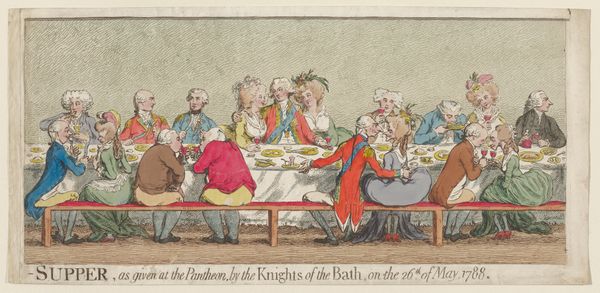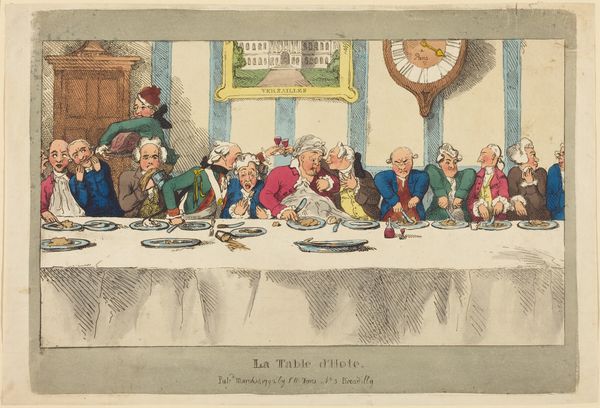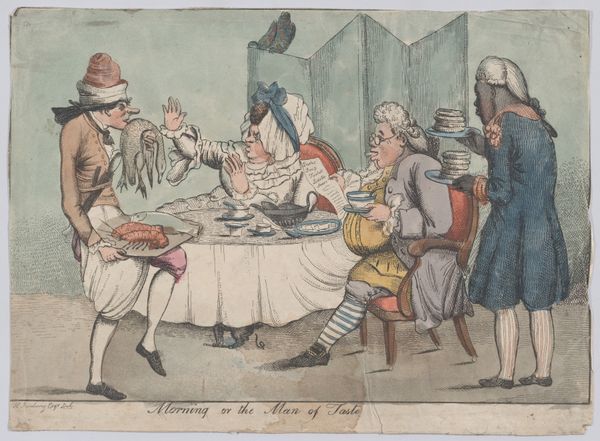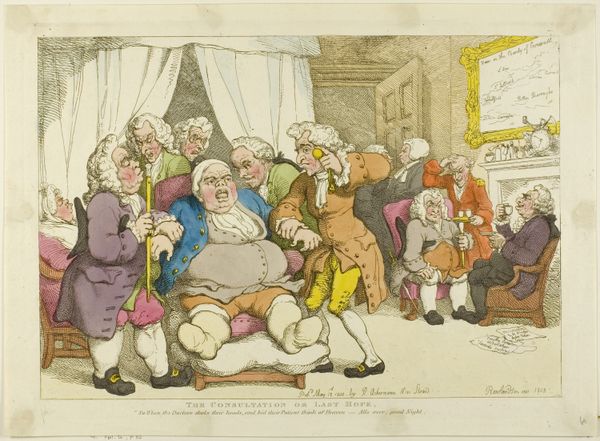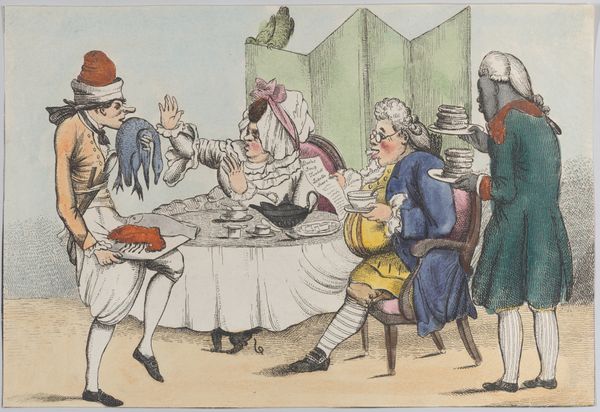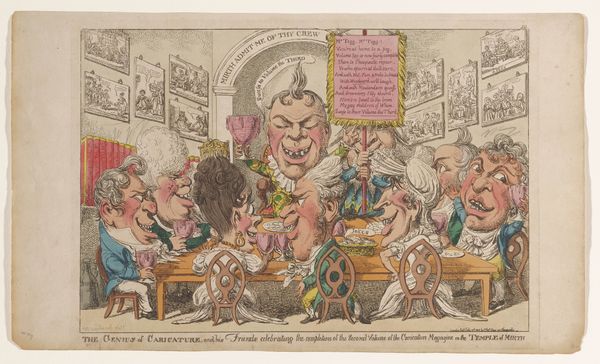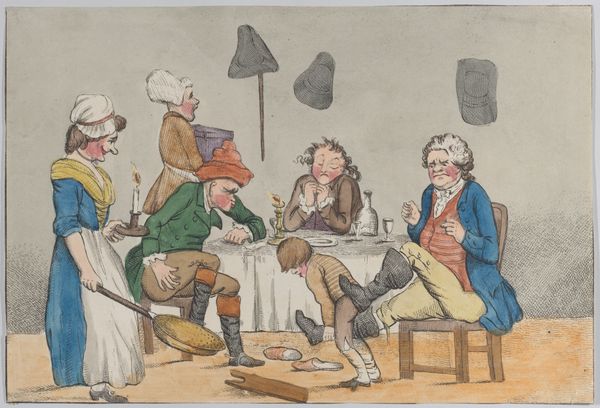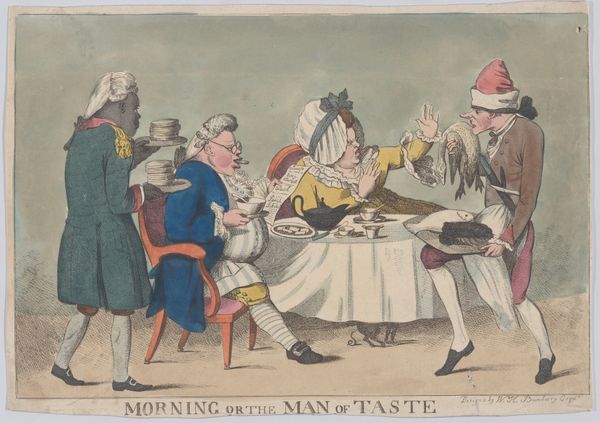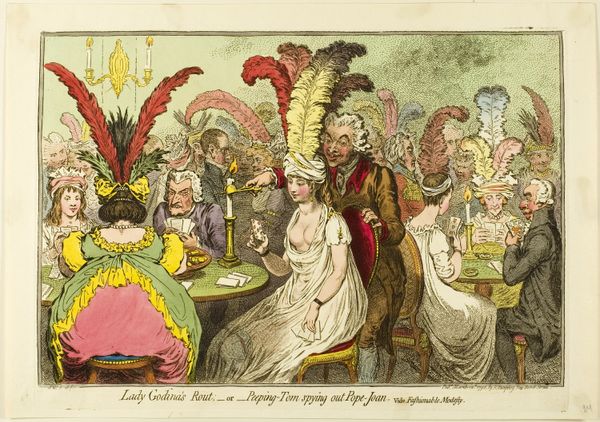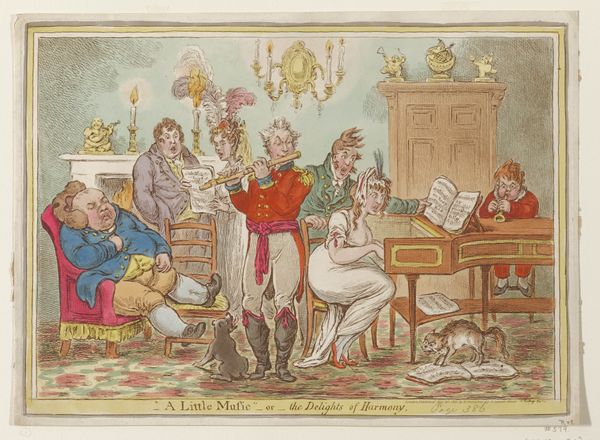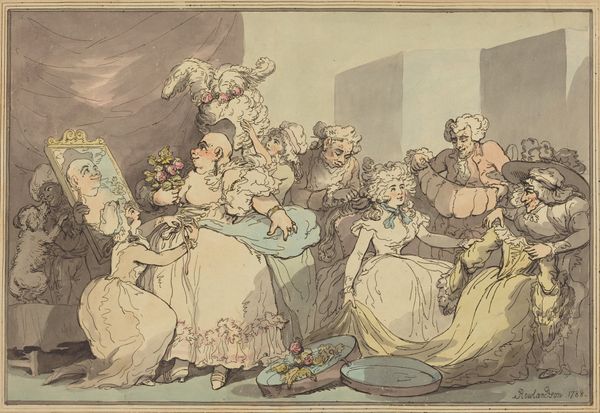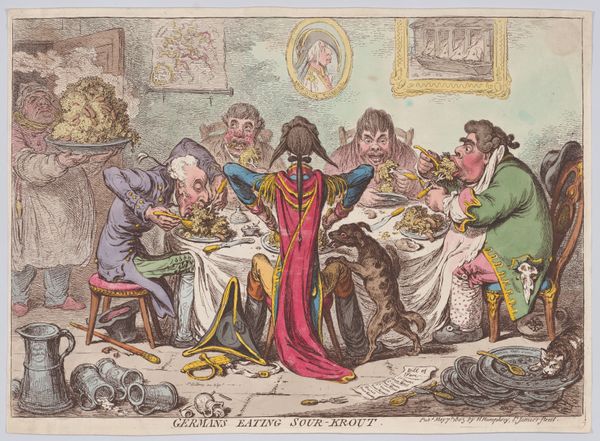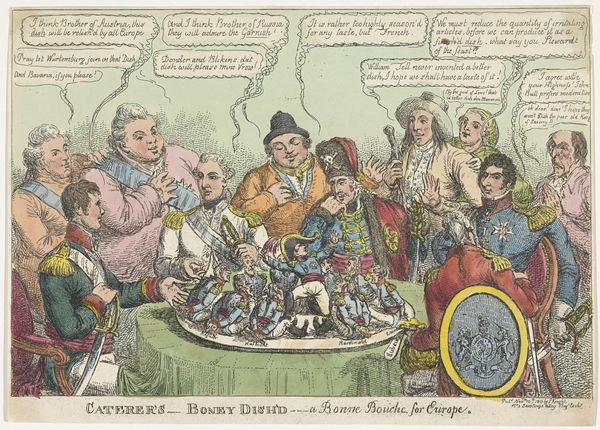
Dimensions: 10 x 21 in. (25.4 x 53.34 cm) (plate)
Copyright: Public Domain
Curator: Immediately striking is the satirical edge – a long table crowded with figures, each face a grotesque exaggeration. There’s a definite tension, even amidst the veneer of civility. Editor: Indeed. This is "Plate 1," a hand-colored etching crafted in 1788 by James Gillray. Works like these offer an entry point into understanding the social and political fractures of late 18th-century Britain. Curator: Fractures, yes, laid bare by caricature. Notice how Gillray seizes on fashion, particularly those extravagant hairstyles, to amplify the vanity and excesses of the elite. The food laid out appears untouched almost, as if social performance trumps sustenance. Editor: Consider too, the symbols he employs. Gillray's prints frequently rely on recognizable visual motifs – the adornments of office, exaggerated gestures – which serve as shorthand for deeper meanings that would have resonated strongly with his contemporary audience. His ability to synthesize complex cultural anxieties into striking visual form, explains his popularity. Curator: Absolutely. What do you see when looking at how bodies are drawn within their power? I read it that women are forced in by these power poses of men. I mean look at this figure pushing so far forward they are being blocked in this power structure from being fully involved. Editor: What a remarkable insight into power dynamics. In 18th-century culture, symbolism often carried the most relevant weight. Perhaps in studying more on the psychology that these images provide for those in charge at the time, one would understand that this caricature places power at odds to others due to visual signs and power structure through bodily form as much as it shows social political satire. Curator: Yes! So, what at first glance reads as simple mockery reveals deeper anxieties about corruption, influence, and societal imbalance. And as this piece currently lives in the Minneapolis Institute of Art, it challenges how audiences understand the construction of British society at this time. Editor: Studying this, as well as his wider portfolio, it is a chance to decipher how collective memory informs social and political commentary in art today. Thank you. Curator: My pleasure!
Comments
No comments
Be the first to comment and join the conversation on the ultimate creative platform.
